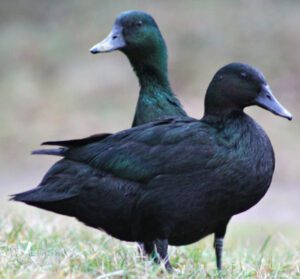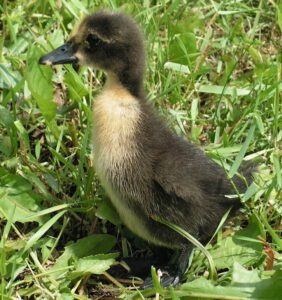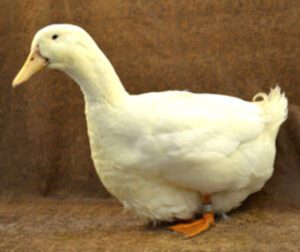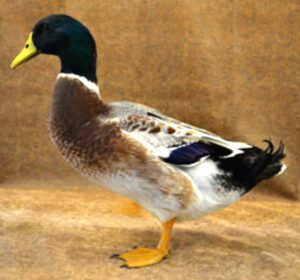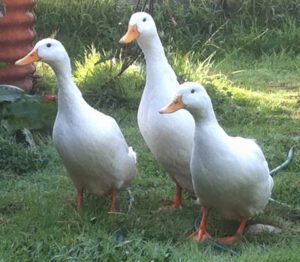Swedish Blue duck which is also known as Blue Swedish is a breed of domestic duck developed by the farmers in Pomerania. It’s a pretty old duck breed and developed in the year of 1835.
Pomerania was part of the Sweden at that time, but today it is known as modern northeast Germany, Holland and Belgium. This duck breed is similar in size to the Rouen ducks, and they have a mallard ancestry.
The breed was mainly developed for domestic uses, such as for meat and eggs production. They are also good as ornamental ducks and as pets. The Swedish Blue duck was first imported into the USA in the late 1800s.
And it was accepted into the American Poultry Association’s Standard of Perfection in 1904. At present it is considered to be an endangered duck breed.
And the breed has been listed on the ‘Watch’ list by the American Livestock Breeds Conservancy. Which means there are less numbers of Swedish Blue duck available. Learn more about this beautiful duck breed below.
Swedish Blue Duck Characteristics
The Swedish Blue duck is a medium sized duck breed. It is similar to the Rouen ducks in size. It is a beautiful bird and has a striking appearance with wonderful black heads, white bibs and a lovely light blue body. Their body is similar to the Pekin duck.
Their white colored bibs run from under the bill halfway down the breast. The head is of medium length. There are also some white on the wings of Swedish Blue duck that creates a very eye appealing color contrast with the blue.
The plumage of both drakes and ducks is an uniform bluish slate. And the legs of these ducks have a characteristic brownish color giving them an upright stance similar to that of the Khaki Campbell ducks.
The head of the drakes has a slightly darker blue coloration compared to their body, and their plumage has a glossy green hint. And the head and bill of the ducks are the same blue slate color of the body.

The legs of both male and female ducks are reddish-brown, with irregular markings of greyish-black. The drakes are heavier than the ducks. Average body weight of these ducks is about 2.5 to 3.5 kg, and the average body weight of the drake is about 3 to 4 kg. Photo from Wikipedia.
Uses
The Swedish Blue duck was developed mainly as an utility bird. The breed is suitable for both meat and eggs production.
Special Notes
Swedish Blue ducks are very calm and friendly birds, and they are one of the heartiest of all the duck breeds. They are considered as excellent ducks for the beginners. They are suitable for both meat and eggs production. Ducks will lay about 100-150 per year.
The egg color of these ducks is white, green or blue tinted. The breed is a very good forager and good for free range duck farming. But they can’t do well in confinement. Sometimes they are quite a noisy breed.
The ducks have a loud yelling type quack. While the drakes have a low pitched tone but can raise the loudness of their quack to rival the ducks. The Swedish Blue duck is a pretty slow maturing breed, but they provide well-flavored meat.
They are very hardy birds and on average can live for 8-12 years. The ducks are tend to be broody. Review full breed profile of this duck breed in the chart below.
| Breed Name | Swedish Blue |
| Other Name | Blue Swedish |
| Breed Purpose | Dual Purpose (eggs & meat) |
| Special Notes | Calm, Friendly, Docile, Very Hardy |
| Breed Class | Medium |
| Broodiness | Average |
| Ducks | 2.5 to 3.5 kg |
| Drakes | 3 to 4 kg |
| Climate Tolerance | All Climates |
| Egg Color | Mainly white, also lay green or blue tinted eggs |
| Egg Size | Large |
| Egg Weight | 80-95 grams |
| Egg Productivity | Medium |
| Flying Ability | Poor |
| Rarity | Common |
| Varieties | Blue, Black, Chocolate, Rust, Splash |
| Country of Origin | Sweden |

